The HDMI cable, due to its structure, resembles everything well " twisted pair", but it only develops from larger number core - 19. Knowing the cable pinout diagram, you can connect an HDMI socket or change the connector.
So who can ask: is it possible to replace the defective HDMI cable or what plug? It’s even easier to buy a new wire, since the prices for a new one are now more affordable. For example, you can add up to 1000 rubles. And it complies with all current standards: High Speed with Ethernet, 3D and 4K support.
Obviously: Is it possible to simply pull out and replace the laying cable against the wall or corrugation? Or you are a connoisseur of top Hi-End brands and you only buy premium class HDMI cables, the prices of which start at how many thousand rubles per 1 meter?!
In this case, you can significantly save money by purchasing a new cable by replacing the defective HDMI connector.
So, without going into technical details, let’s take a look at the breakdown of any current HDMI cable(High Speed with Ethernet class).
Pinout of HDMI connector Type A (19pin)
Connecting the HDMI cable to the middle
As you can see, the HDMI cable is divided into 5 groups of 3 wires. І 4 more lived walking side by side (not grouped).
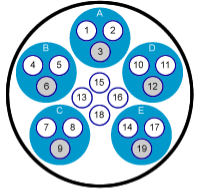
There is no such thing as a single color marking, and the cable distributor can have its own marking. Our copy of the HDMI cable had the following configuration:
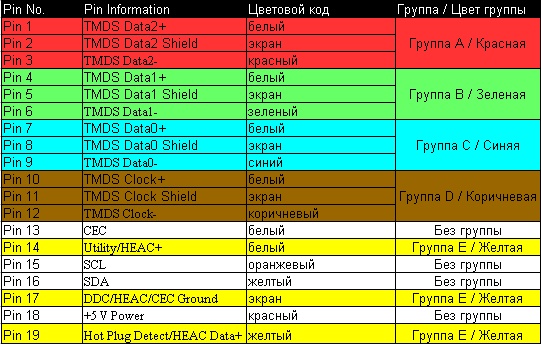
Let's try it on the butt given to the cable, which is sold by the cut (and so), demonstrate its processing and completion.
HDMI cable splitter
1. Strip the HDMI cable from the outer jacket.
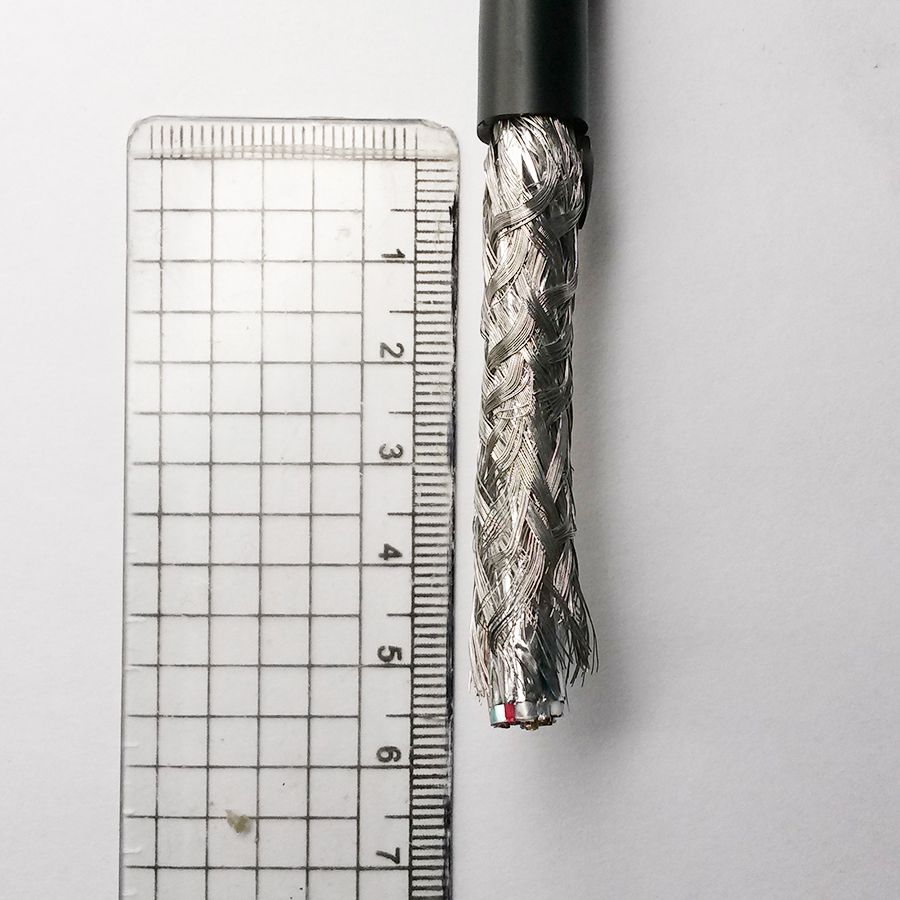
2. The braided screen is destructible, and groups of wires come loose.
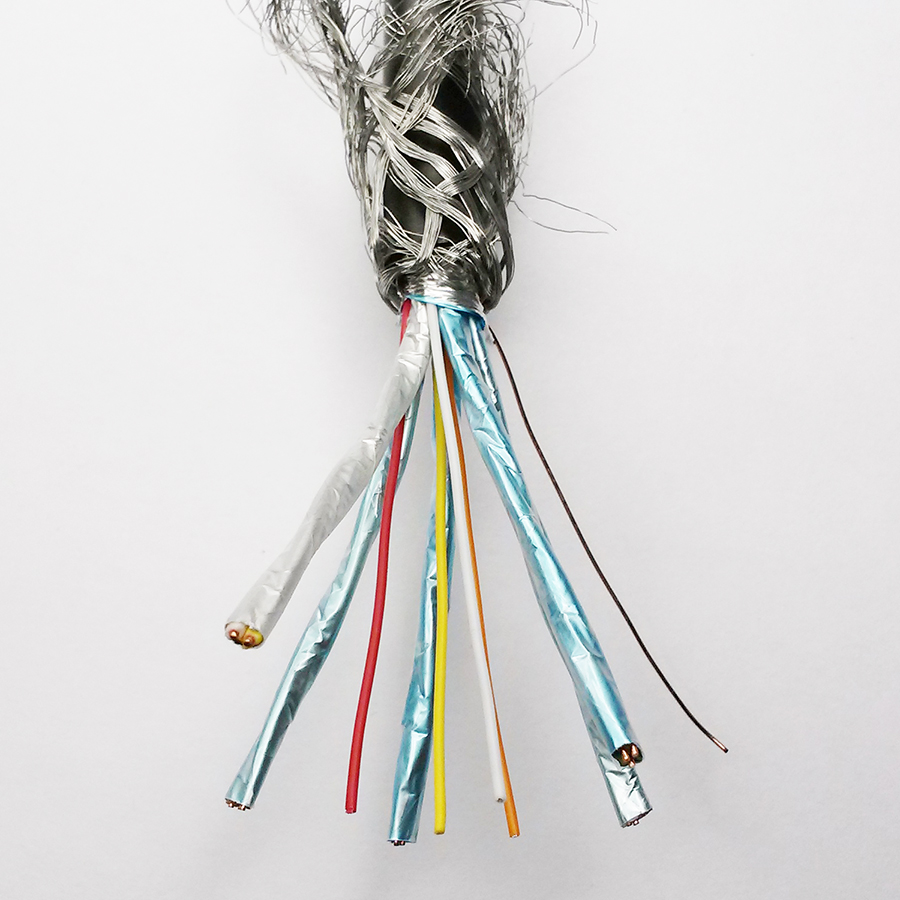
3. Form a group of contacts and clean them.
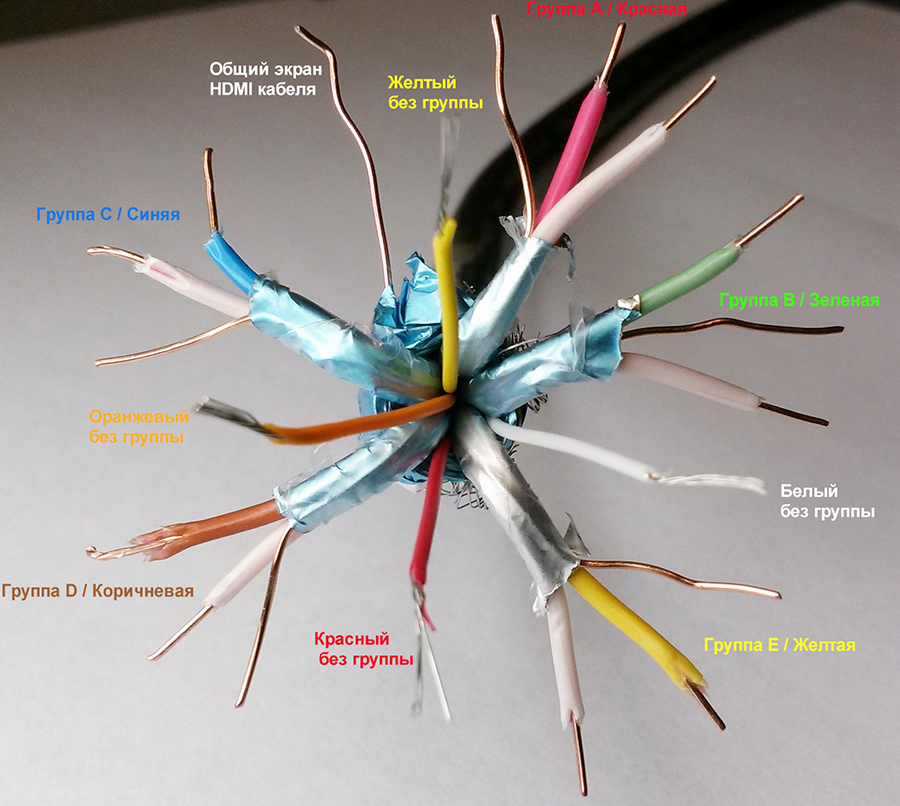
4. As a connector to the cable, it is quickly connected by a socket module.
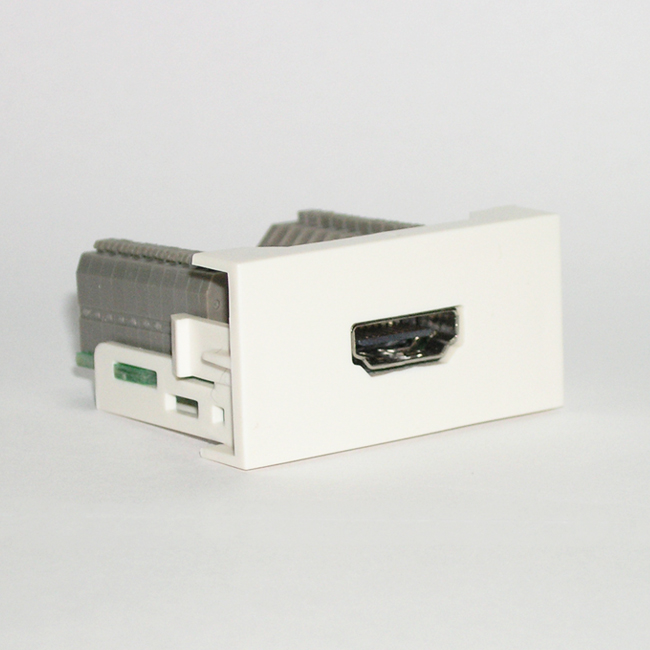
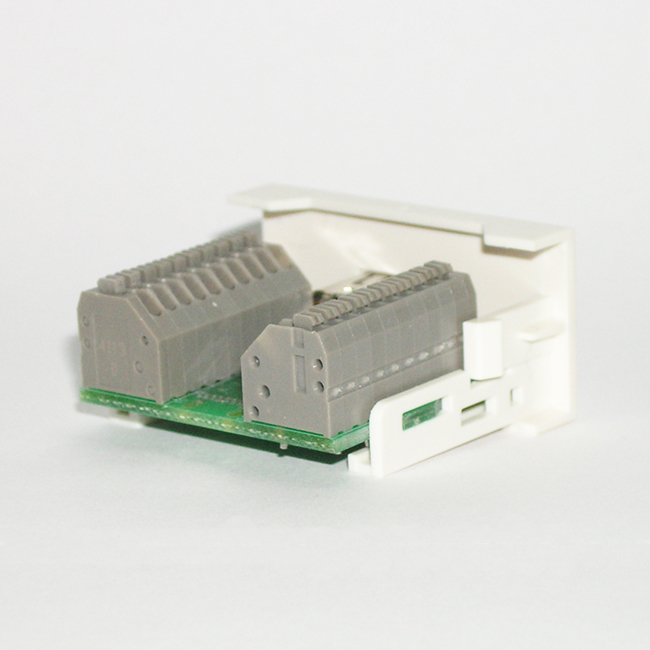
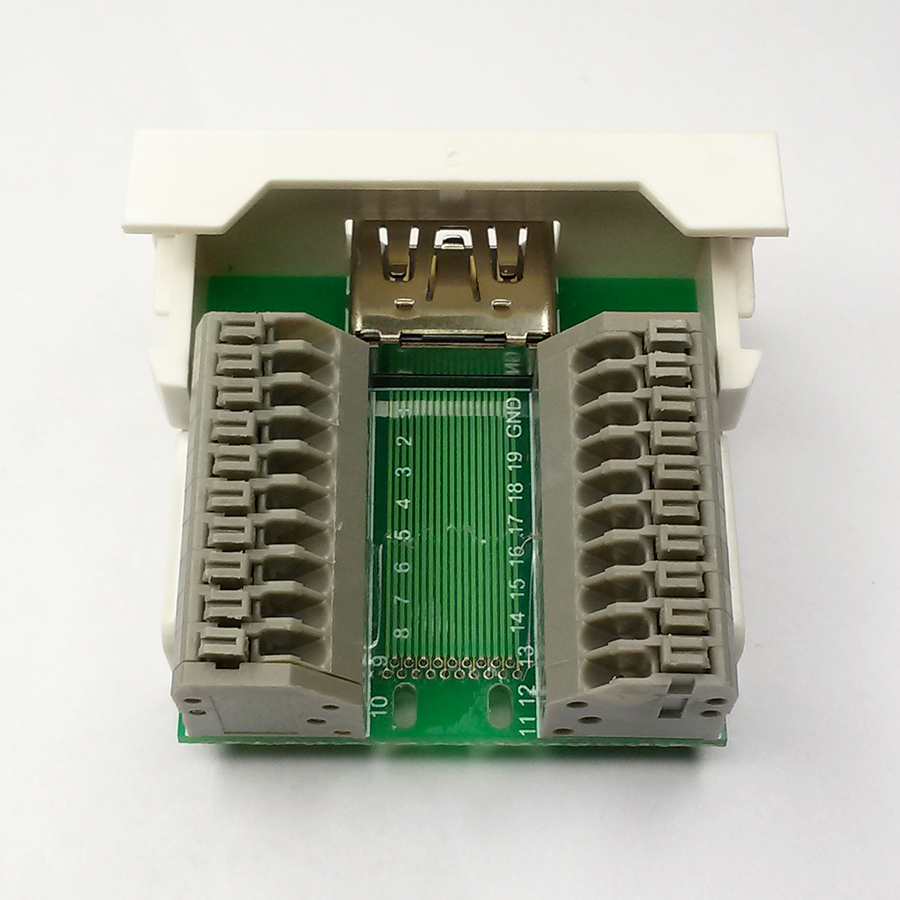
This module We're glad you can terminate the HDMI cable yourself without special kit expensive obtisknogo possession. And by placing it in a frame, you will have a full HDMI outlet.
5. According to the table, the skin wire is squeezed into the terminal blocks of the module.
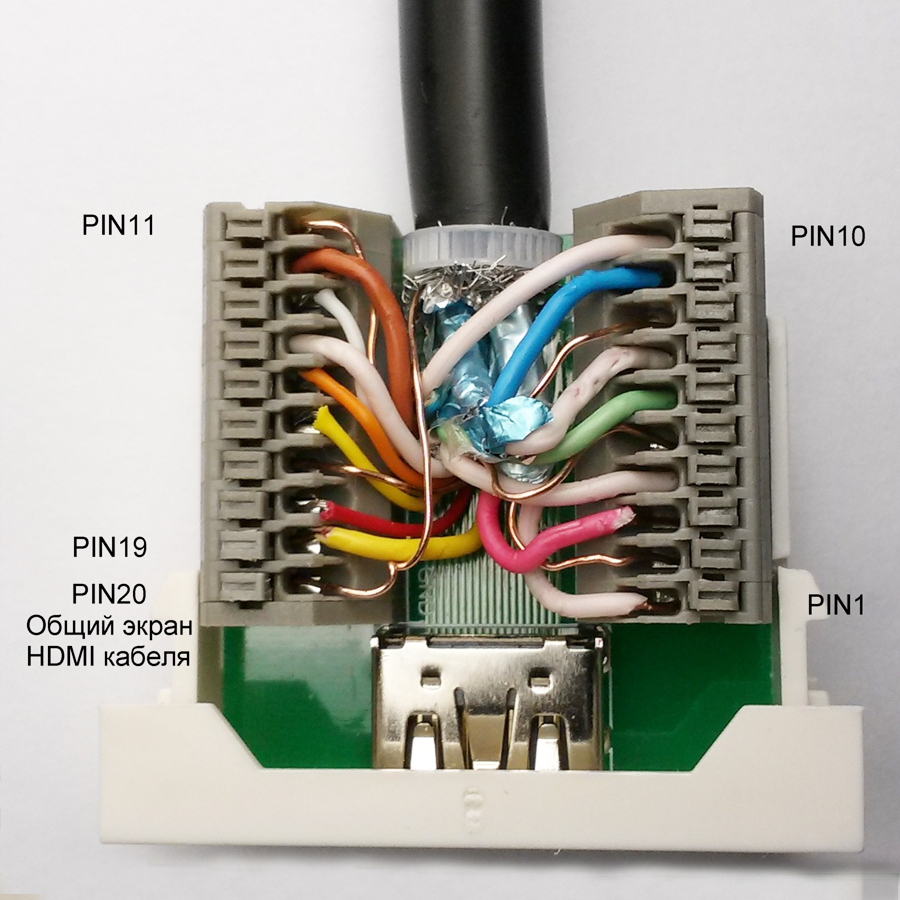
Thus, during repairs or everyday life, you can lay the HDMI cable on the wall. Finish it on both sides with the Dr.HD HDMI socket module and press it down.
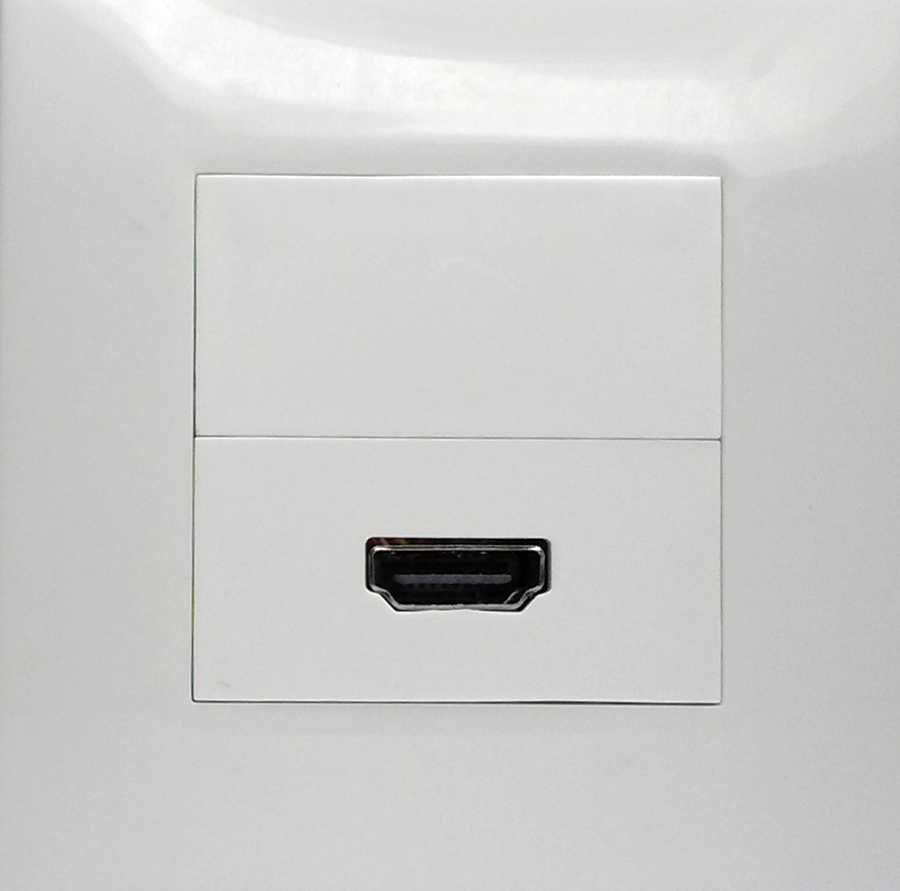
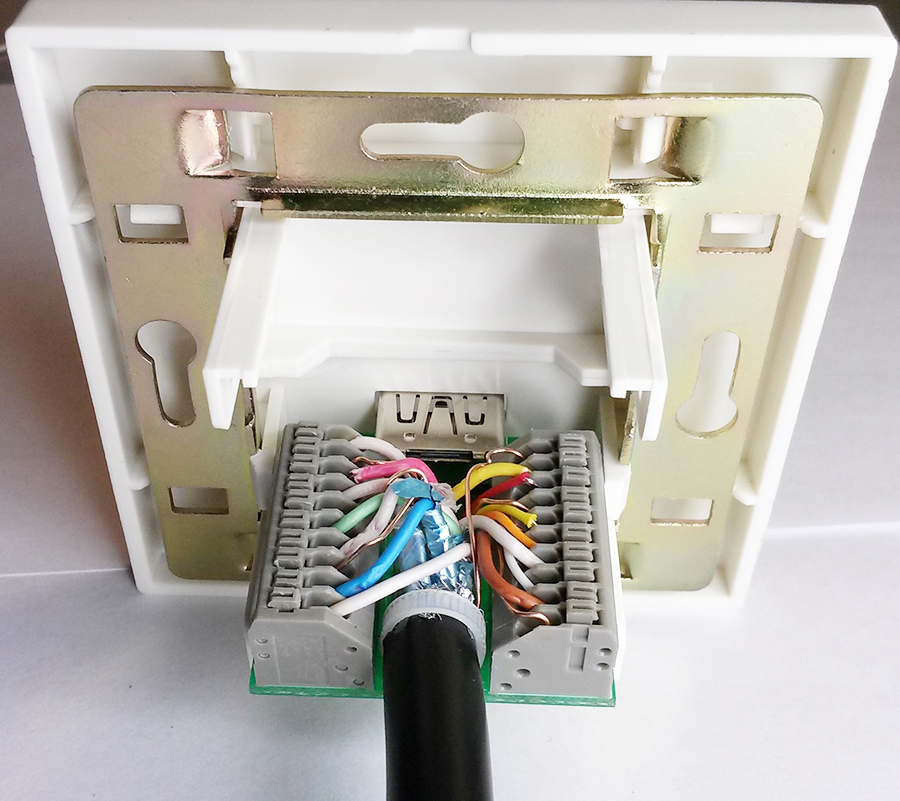
Let's take a look at the problem if the HDMI cable is broken.
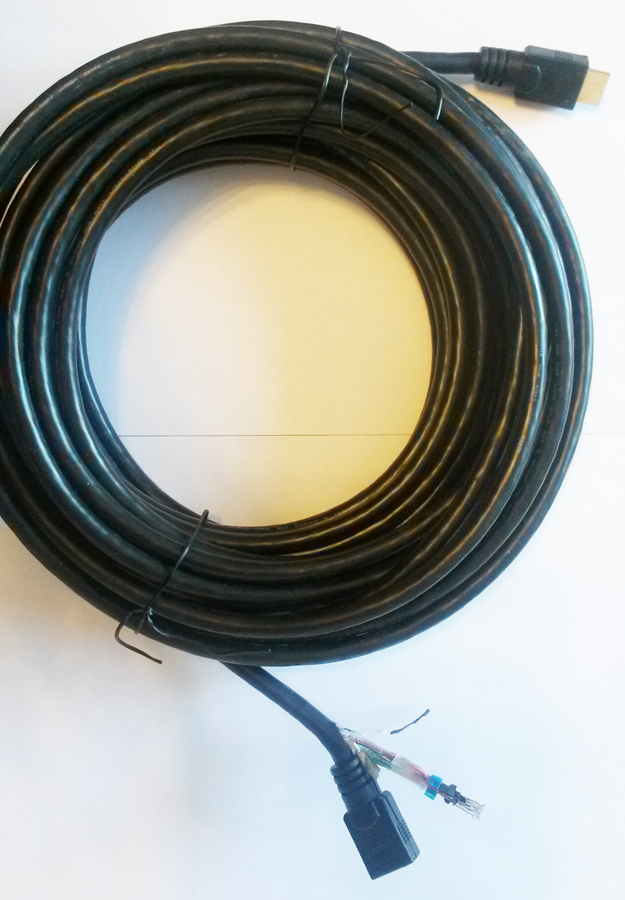
Diemo, for the same points.
1. We strip the cable, assemble and shape groups of wires.
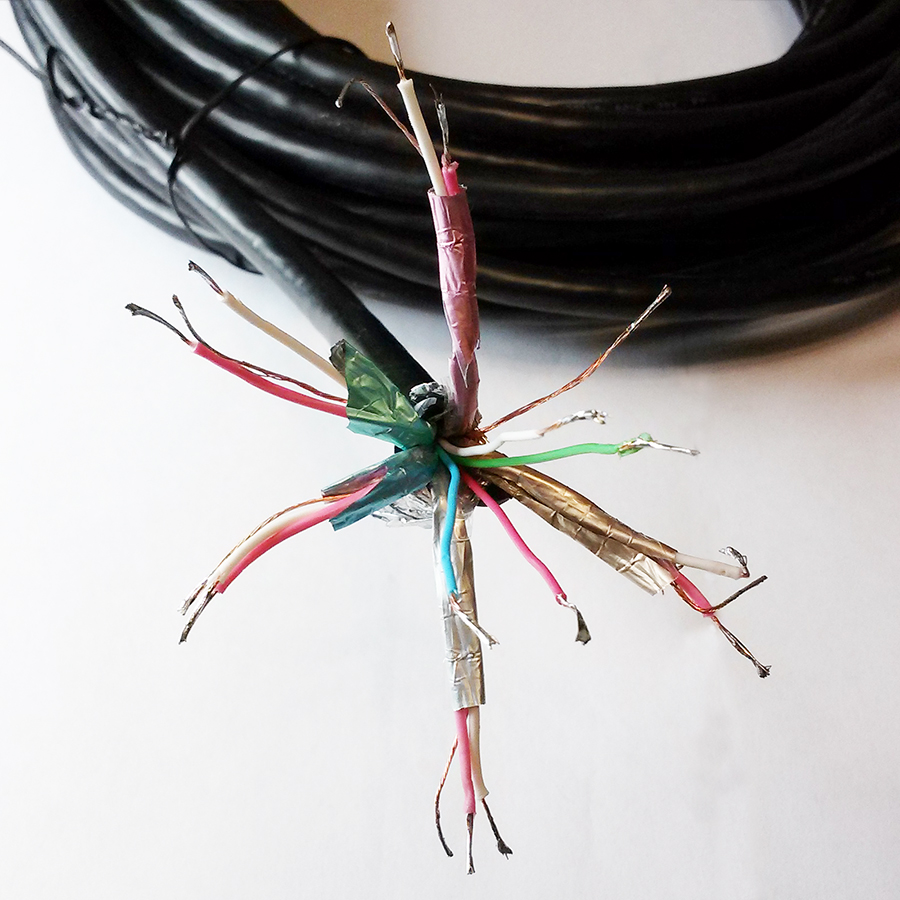
2. The remnants of the retin lived here less and there was a rich wire that would require their service.
To identify groups A/B/C/D/E, you need a tester (dialing). Once you have determined the correct grouping of the wires, as well as wires without a group, you can proceed to pressing.
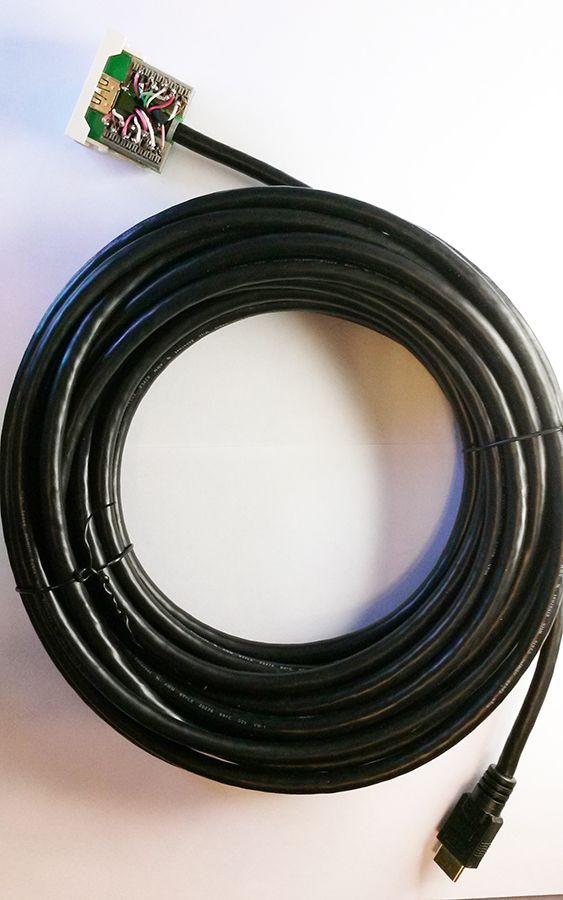
We successfully protested the use of this updated cable. Yak dzherelo buv Blue-Ray drive and 3D video. They didn’t bother us with the old digital codes.
Axis and everything!
Fri, 2015-04-10 13:39
Enter
In 2002, the birth of great virobniks consumer electronics, including Hitachi, Philips, Sony, Toshiba and others, were reputed new interface High-Definition Multimedia Interface (HDMI). It has become the first purely digital interface for transmitting compressed audio and video streams, rather than DVI, which transmits digital video streams.
The HDMI interface has been steadily evolving. Today there are already several versions with different numbers. Persha HDMI version 1.0 appeared back in 2002. HDMI 1.3 was approved in April 2006. The original version uses the same hardware specifications and cables, but is enhanced access control and types of information that can be transmitted via HDMI. For example, HDMI 1.0 supports a maximum bandwidth of 4.9 Gbit/s, and HDMI 1.3 – less than 10.2 Gbit/s.
Pointed lower short information about HDMI versions.
- HDMI 1.0 – 12/2002.
- One cable for transmitting digital audio/video streams with a maximum throughput of 4.9 Gbit/s. Supports video streaming up to 165 megapixels per second (1080p @ 60 Hz or UXGA) and 8-channel audio at 192 kHz/24 bit.
- HDMI 1.1 – 5/2004.
- Added support for the protection of DVD Audio content.
- HDMI 1.2 – 8/2005.
- Added support for Super Audio CD;
- HDMI Type A connector for connecting a PC as a device;
- Dzherela PCs can use the "Red" mode kvitiv RGB, the YCbCr color mode option is saved;
- support dzherel iz low voltage.
- HDMI 1.3 – 6/2006.
- Audio/video connection capacity has been increased to 102 Gbit/s;
- improved color support, including depth 30, 36 and 48 bits (RGB or YCbCr);
- added to support xvYCC color standards;
- added support for automatic synchronization of sound;
- added support for Dolby TrueHD and DTS-HD streams (formats that are supported in HD DVD and Blu-ray discs) for decoding by external receivers;
- A new mini-socket has been approved for devices such as video cameras.
Below is a table of the main improvements in version 1.3, updated from 1.2.
| Function | HDMI 1.2 | HDMI 1.3 |
| Maximum throughput | 4.95 Gbit/s | 10.2 Gbit/s |
| Maximum range of frequencies | 165 MHz | 340 MHz |
| Maximum allowed | 1920x1080 progressive (1080p) | 2560x1440 progressive (1440p) |
| Maximum depth of color | 24 bits | 48 bit |
| Maximum number of colors | 16.7 million | 281 trillion |
| DTS support Dolby Digital 5.1 | So | So |
| Support Dolby TrueHD and DTS-HD | No | So |
| Maximum frequency of sound sampling (2 channels) | 192 kHz | 768 kHz |
| Maximum frequency of sound sampling (from 3 to 8 channels) | 96 kHz (4 streams max.) | 192 kHz (8 streams max.) |
Technical information
Below is a diagram of the HDMI interface.
Pin 1 - TMDS Data2+
Pin 2 - TMDS Data2 Shield
Pin 3 - TMDS Data2-
Pin 4 - TMDS Data1+
Pin 5 - TMDS Data1 Shield
Pin 6 - TMDS Data1-
Pin 7 - TMDS Data0+
Pin 8 - TMDS Data0 Shield
Pin 9 - TMDS Data0-
Pin 10 – TMDS Clock+
Pin 11 - TMDS Clock Shield
Pin 12 - TMDS Clock-
Pin 13 - CEC
Pin 14 -Reserved (N.C. on device)
Pin 15 - SCL
Pin 16 - SDA
Pin 17 - DDC/CEC Ground
Pin 18 - +5 V Power
Pin 19 - Hot Plug Detect
- TMDS (Transition-Minimized Differential Signaling). Technology of high-speed transmission of digital streams, which is used in HDMI and DVI interfaces. Vikorist has three channels that transmit audio/video and additional data streams with a throughput of up to 3.4 Gbit/s per channel.
- CEC (Consumer Electronics Control). Allows you to transmit commands and other signals between participants in a connection. The CEC functions are implemented according to the controller. If all participants in the connection support HDMI CEC, you can, for example, issue commands from the remote control of all connected equipment. The range of commands includes switching on/off, opening, switching to the cleaning mode, recording and others.
- SCL (Serial Data Clock). Indicates that data is synchronized.
- SDA (Serial Data Access). Transfers data.
- DDC (Display Data Channel). Allows you to transfer display specifications such as driver name, model number, formats and resolutions supported, etc.
Support of formats
Today all major video formats are supported, including PAL, NTSC, ATSC and others. Separate video content is possible up to 1440p or 2560x1440 in progressive format (Blu-ray and HD-DVD can be set to a maximum of 1080p). Supports color depth up to 48 bits (over 280 trillion colors) with a refresh rate of up to 120 Hz.
The HDMI cable, by its structure, resembles the well-known “twisted pair”, but it consists of a larger number of cores - 19. Knowing the cable pinout diagram, you can connect an HDMI socket or change the connection.
So who can ask: is it possible to replace the defective HDMI cable or what plug? It’s even easier to buy a new wire, since the prices for a new one are now more affordable. For example, a 5-meter HDMI cable can cost around 500 rubles. And it complies with all current standards: High Speed with Ethernet, 3D and 4K support.
Obviously: Is it possible to simply pull out and replace the laying cable against the wall or corrugation? Or you are a connoisseur of top Hi-End brands and you only buy premium class HDMI cables, the prices of which start at how many thousand rubles per 1 meter?!
In this case, you can significantly save money by purchasing a new cable by replacing the defective HDMI connector.
So, without going into technical details, let’s look at the wiring of any current HDMI cable (High Speed with Ethernet class).
Pinout of HDMI connector Type A (19pin)
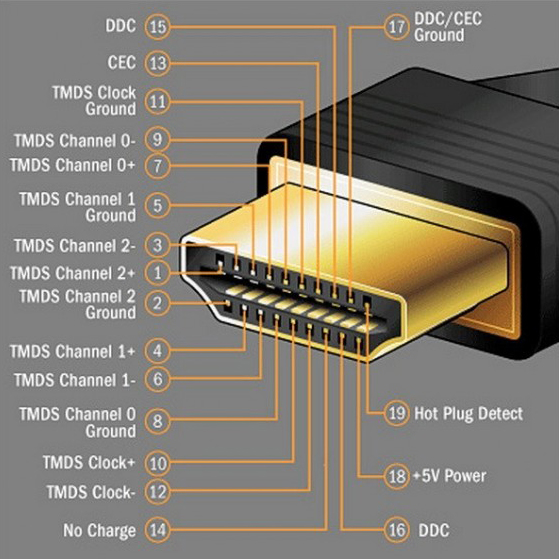
Connecting the HDMI cable to the middle
As you can see, the HDMI cable is divided into 5 groups of 3 wires. І 4 more lived walking side by side (not grouped).

There is no such thing as a single color marking, and the cable distributor can have its own marking. Our copy of the HDMI cable had the following configuration:
![]()
Try this cable, which is sold pre-cut (and so on), to demonstrate its processing and completion.
HDMI cable splitter
1. Strip the HDMI cable from the outer jacket.

2. The braided screen is destructible, and groups of wires come loose.

3. Form a group of contacts and clean them.

4. As a connector to the cable, it is fastened with the Dr.HD HDMI socket module under pressing.



This module is handy so that you can independently terminate an HDMI cable without a special set of expensive equipment. And by placing it in a frame, you will have a full HDMI outlet.
5. According to the table, the skin wire is squeezed into the terminal blocks of the module.

Thus, during repairs or everyday life, you can lay the HDMI cable on the wall. Finish it on both sides with the Dr.HD HDMI socket module and press it down.


Let's take a look at the problem if the HDMI cable is broken.

Diemo, for the same points.
1. We strip the cable, assemble and shape groups of wires.

2. The remnants of the retin lived here less and there was a rich wire that would require their service.
To identify groups A/B/C/D/E, you need a tester (dialing). Once you have determined the correct grouping of the wires, as well as wires without a group, you can proceed to pressing.

We successfully protested the use of this updated cable. Yak dzherelo buv Blue-Ray drive and 3D video. They didn’t bother us with the old digital codes.
